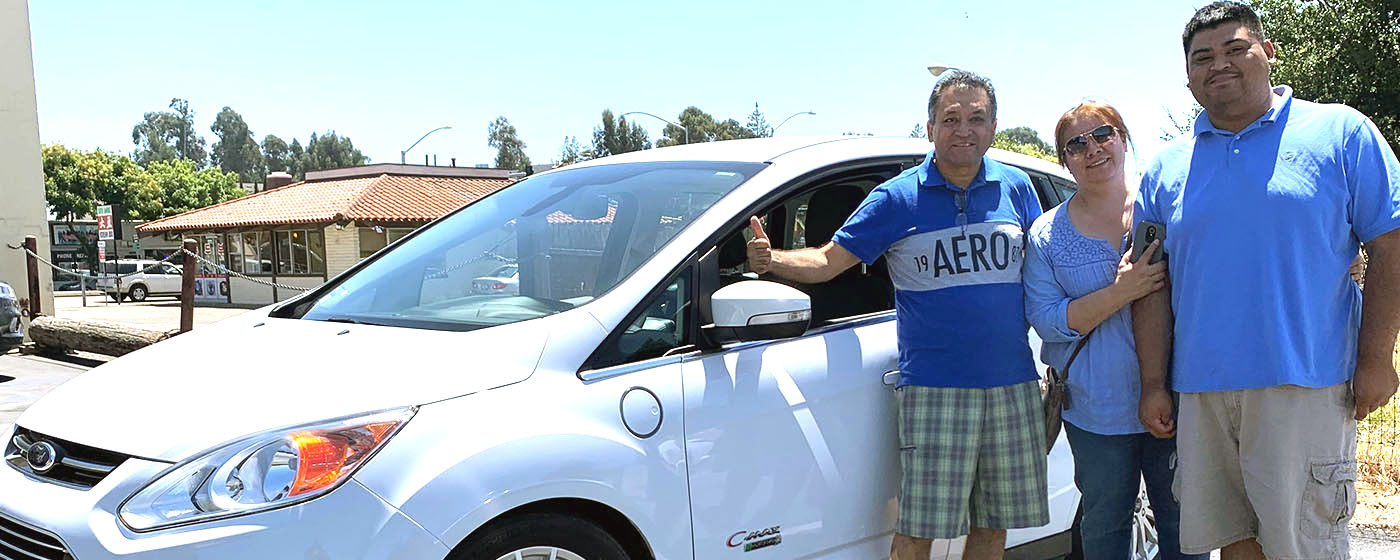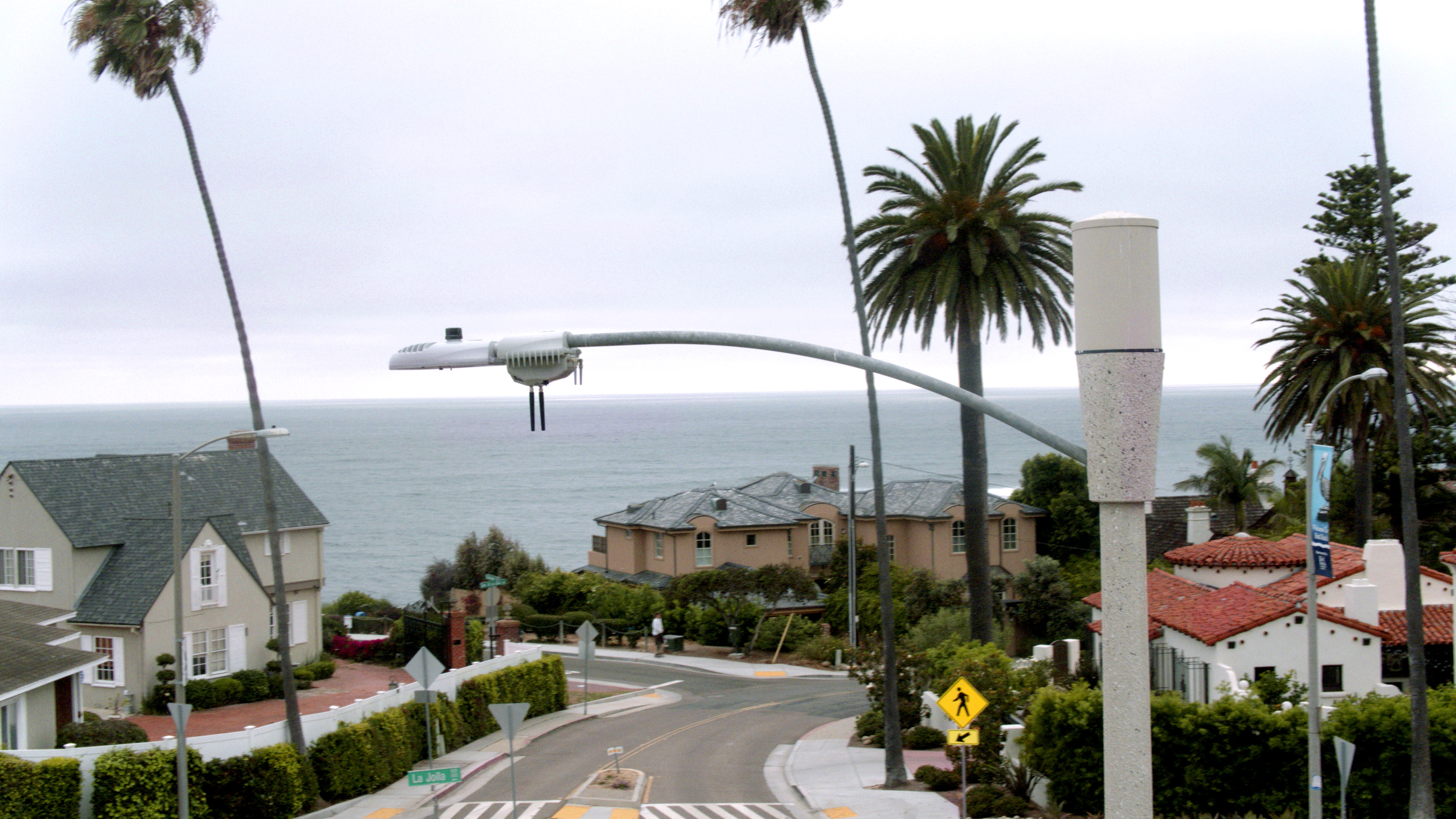3.3 Vehicle Emissions
This domain focuses on strategies that reduce the emissions of combustion engine vehicles or increase the share of electric vehicles on the road.
3.3.1 Provide grants for pollutant remediation and reduction initiatives

Source: BAAQMD
| Location | Ventura County, CA |
|---|---|
| Details | The Carl Moyer Memorial Air Quality Standards Attainment Program, which is jointly run by CARB and the VCAPCB, provides grants for the following projects: Repower commercial fishing boats with lower emission engines; Repower farm equipment with lower emission engines; Replace emergency vehicles with lower emission engines; Replace heavy duty diesel trucks with lower emission engines; New, conversion of existing, or expansion of battery charging/alternative fueling stations. |
| Links | Ventura County Air Pollution Control District |
| Implementation Costs & Impact Factor | Since its inception, over $42 million was granted to businesses in Ventura County. In 2017, $4.5 million was allocated; in 2018, $2.5 million was allocated;iIn 2019, $6 million was allocated. |
| Scalable Potential | The case study was funded by CARB, so the primary pathway is through CARB and the local air pollution district. Most funding is allocated to commercial uses. |
| Similar | Transportation Fund for Clean Air County Program Manager Fund, BAAQMD |
3.3.2 Provide commercial rebates for commercial building owners to install EV charging stations

Source: Walmart
| Location | Los Angeles, CA |
|---|---|
| Details | The Los Angeles Department of Water and Power (LADWP) provides rebates to commercial customers toward the purchase of a Level 2 electric vehicle charging station. Commercial customers who purchase and install EV charging stations for employee and public use can receive up to $5,000 for each charger, with up to $750 in additional rebate funds per extra charge port. Eligible customers may qualify for up to 40 rebate rewards depending on the number of parking spaces at the installation site. EV charging stations must be installed within the LADWP service area. Rebates are available on a first-come, first-served basis through June 30, 2021, or until funds are exhausted. |
| Links | LADWP |
| Implementation Costs & Impact Factor | See recent dashboard report. As for February 2020, $31 million for Level 2 charging stations, with over 350 applications paid, pending, or reserved. |
| Scalable Potential | Many parking structures in Stockton may be good candidates for incentivizing EV charging station installation. |
| Similar | Rancho Cucamonga Municipal Utility |
3.3.3 Provide grants to income eligible residents for the replacement of high-emission cars with low-emission cars

Source: BAAQMD
| Location | San Francisco Bay Area, CA |
|---|---|
| Details | The Bay Area Air Quality Management District’s (BAAQMD) Clean Cars for All program offers grants up to $9,500 to income-eligible residents to replace a vehicle eligible for retirement with a PEV or HEV. Eligible vehicles for replacement should have a model year 15 years or older than the current year. Recipients may buy or lease a new or used PEV or HEV. Grants vary depending on the household income and vehicle technology. Vehicles that are replaced must be turned in at an authorized dismantler. Individuals that purchase an all-electric vehicle are eligible to receive up to $2,000 for the purchase and installation of a Level 2 electric vehicle supply equipment. |
| Links | BAAQMD |
| Implementation Costs & Impact Factor | From 2015-2019, $112 million was allocated to Clean Cars 4 All from CARB ($10 million of which was from Volkswagen settlement funds). Of this, San Joaquin Valley APCD has expended about $9 million of $41 million to replace 1,450 vehicles (about 15 percent battery electric, 35 percent plug-in hybrid, 50 percent hybrid). Read more here and through Drive Clean in the San Joaquin. |
| Scalable Potential | Further grant opportunities are expected through the program in the coming years. Stockton could target underserved communities in future grant applications. |
| Similar | City of Pasadena |
3.3.4 Engage automobile manufacturers as stakeholders in the EV market

Source: Electrek
| Location | Arizona |
|---|---|
| Details | Arizona requires car dealers to make information about alternative fuel vehicles and Arizona-based incentives for purchasing or leasing alternative fuel vehicles available to the public. The state also created an Electric Vehicles Arizona stakeholder group to bring together auto dealers and other interested parties so that they better understand the opportunities and barriers that electric vehicles face in the state. |
| Links | Carnegie Endowment Report |
| Implementation Costs & Impact Factor | No implementation costs. Between 2017 and 2018, AZ EV sales increased from 2,976 (0.90% of market share) to 7,086 (1.84% of market share). |
| Scalable Potential | According to the California Clean Vehicle Rebate Project, San Joaquin County customers have received about 3,000 rebates, compared to 366,000 state-wide, leaving a lot of growth potential compared to other counties. |
| Similar | Chicago Area Clean Cities |
3.3.5 Reduce vehicle speed limits

Source: NACTO
| Location | Massachusetts |
|---|---|
| Details | Introducing lower speed limits on motorways cuts fuel consumption and pollutant emissions. The exact impact is contingent upon vehicle type, driving patterns, frequency of speeding, congestion, and traffic diversion. |
| Links | European Environment Agency |
| Implementation Costs & Impact Factor | Pollution: Depending on driving behavior, it is possible to expect anything from 2-18% reductions in GHGs. Public Health: In an 83-city study, PM2.5-related mortality reduction is worth $31 billion (2007 dollars). Fatalities and Injuries: 2200 crashes, 18 fatalities, and 1200 injuries reduced in Massachusetts. Economic Benefits: Massachusetts predicted to save $210 million (30mph to 25mph reduction). |
| Scalable Potential | According to the California Clean Vehicle Rebate Project, San Joaquin County customers have received about 3,000 rebates, compared to 366,000 state-wide, leaving a lot of growth potential compared to other counties. |
| Similar | NYC Neighborhood Slow Zones Philadelphia Neighborhood Slow Zones Minneapolis, MN |
3.3.6 Install smart streetlights

Source: City of San Diego
| Location | San Diego, CA |
|---|---|
| Details | Approximately 8,000 intelligent sensors are being installed to transform the City’s streetlights into smart infrastructure that will help optimize traffic and parking, plus enhance public safety, environmental awareness and overall livability for San Diego residents. These intelligent sensors, or CityIQ nodes, can see, hear and feel the heartbeat of a city. The node connects city officials and citizens to real-time data, allowing for endless applications. In addition to the intelligent sensor installation, approximately 25 percent of San Diego’s outdoor lights will be upgraded to reduce energy consumption and greenhouse gas emissions. The City of San Diego has retrofitted approximately 38,000 light fixtures with energy efficient lighting of which, 3,500 are currently equipped with advanced lighting control systems. |
| Links | City of San Diego |
| Implementation Costs & Impact Factor | The Intelligent Outdoor Lighting Project makes San Diego one of America’s most energy-efficient cities and saves $2.8 million in annual energy costs due to the more efficient lighting. The City will avoid or minimize future costs of installing one-off point solutions i.e. in-ground parking sensors, pedestrian detection infrared, inductive loop surveillance at intersections, CCTV video cameras, and more. In the long term, the compounding app economy, cost avoidance for single-purpose technology deployment, real-estate development planning models, and small businesses and retail store location optimization tools have the potential to bring increased revenue and jobs to the region. |
| Scalable Potential | The City of San Diego’s smart city digital infrastructure will make it easier for residents to find parking, higher utilization of parking spots, and streamlined parking management. Based on experiences with prior deployments of similar technology solutions, the City expects a 40 percent reduction in time spent looking for parking. San Diego’s smart sensors will provide valuable data to enhance traffic flow. Studies conducted by application providers indicate that there’s potential to improve traffic by 10-20 percent by optimizing city management of traffic and providing en-route guidance improvements. Less traffic also means lower greenhouse gas emissions. The impact of this is significant, and reduced traffic will improve air quality and associated health and productivity benefits. |
| Similar | SmartCityPDX, Portland |